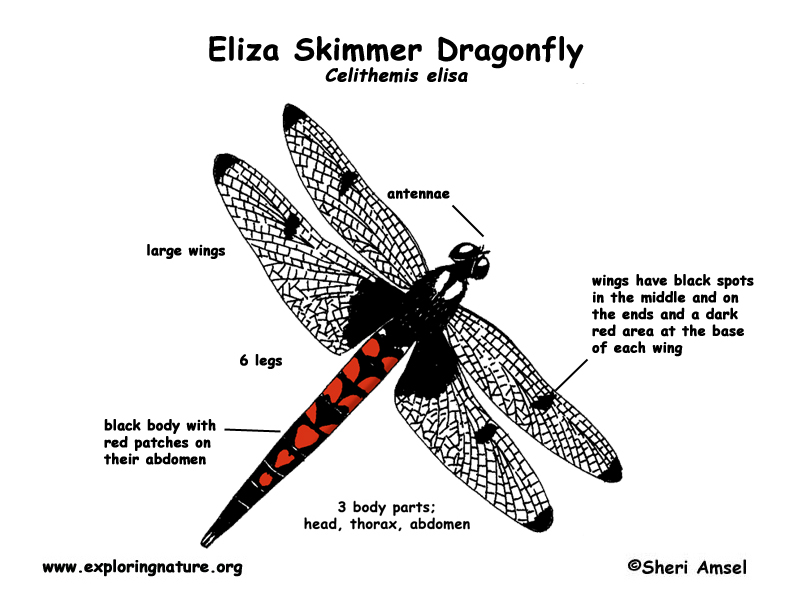

They are found from Southern Canada to Nova Scotia and south to Florida and west to Minnesota. They are most common in Canada and the northern U.S. but there are never very many in any one place.
They are found in marshes, ponds and slow-moving streams.
They have large wings and are strong fliers. The buzzing sound of their flight can be heard as they go by. They have a black body with red patches on their abdomen. Their wings have black spots in the middle and on the ends and a dark, red area at the base of each wing. They are 1 - 1.5 inches long.
When they rest on plants or rocks, they sit with their wings spread.
They eat flying insect including mosquitoes, flies, butterflies, moths, mayflies, and even other dragonflies!
Females lay their eggs on plant stems near the water line.
Kingdom: Animalia
Phylum: Arthropoda
Class: Insecta
Order: Odonata
Suborder: Anisoptera
Family: Libellulidae
Genus: Celithemis
Species: C. elisa
When you research information you must cite the reference. Citing for websites is different from citing from books, magazines and periodicals. The style of citing shown here is from the MLA Style Citations (Modern Language Association).
When citing a WEBSITE the general format is as follows.
Author Last Name, First Name(s). "Title: Subtitle of Part of Web Page, if appropriate." Title: Subtitle: Section of Page if appropriate. Sponsoring/Publishing Agency, If Given. Additional significant descriptive information. Date of Electronic Publication or other Date, such as Last Updated. Day Month Year of access < URL >.
Amsel, Sheri. "Dragonfly (Eliza Skimmer)" Exploring Nature Educational Resource ©2005-2024. December 13, 2024
< http://www.exploringnature.org/db/view/271 >

